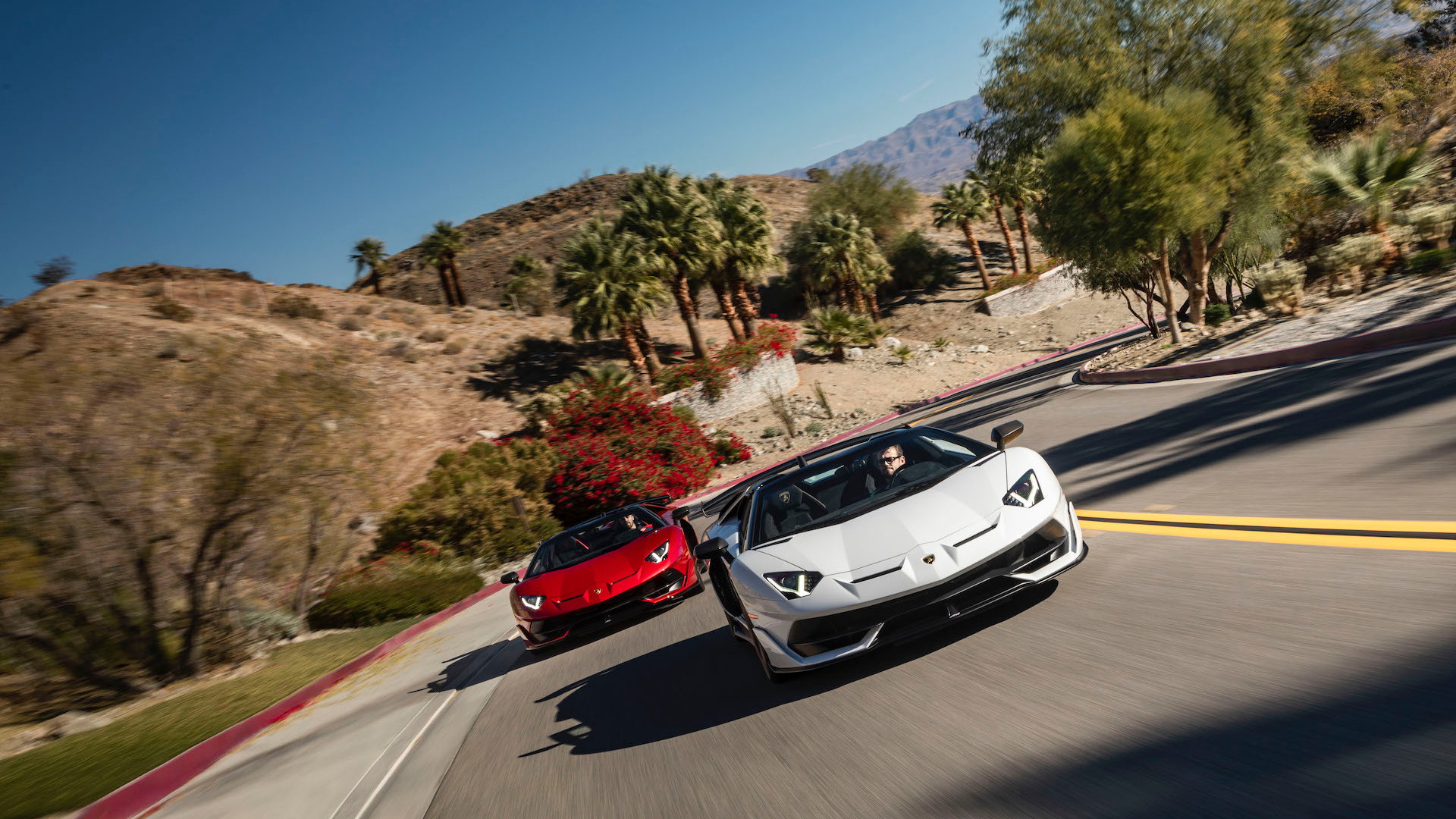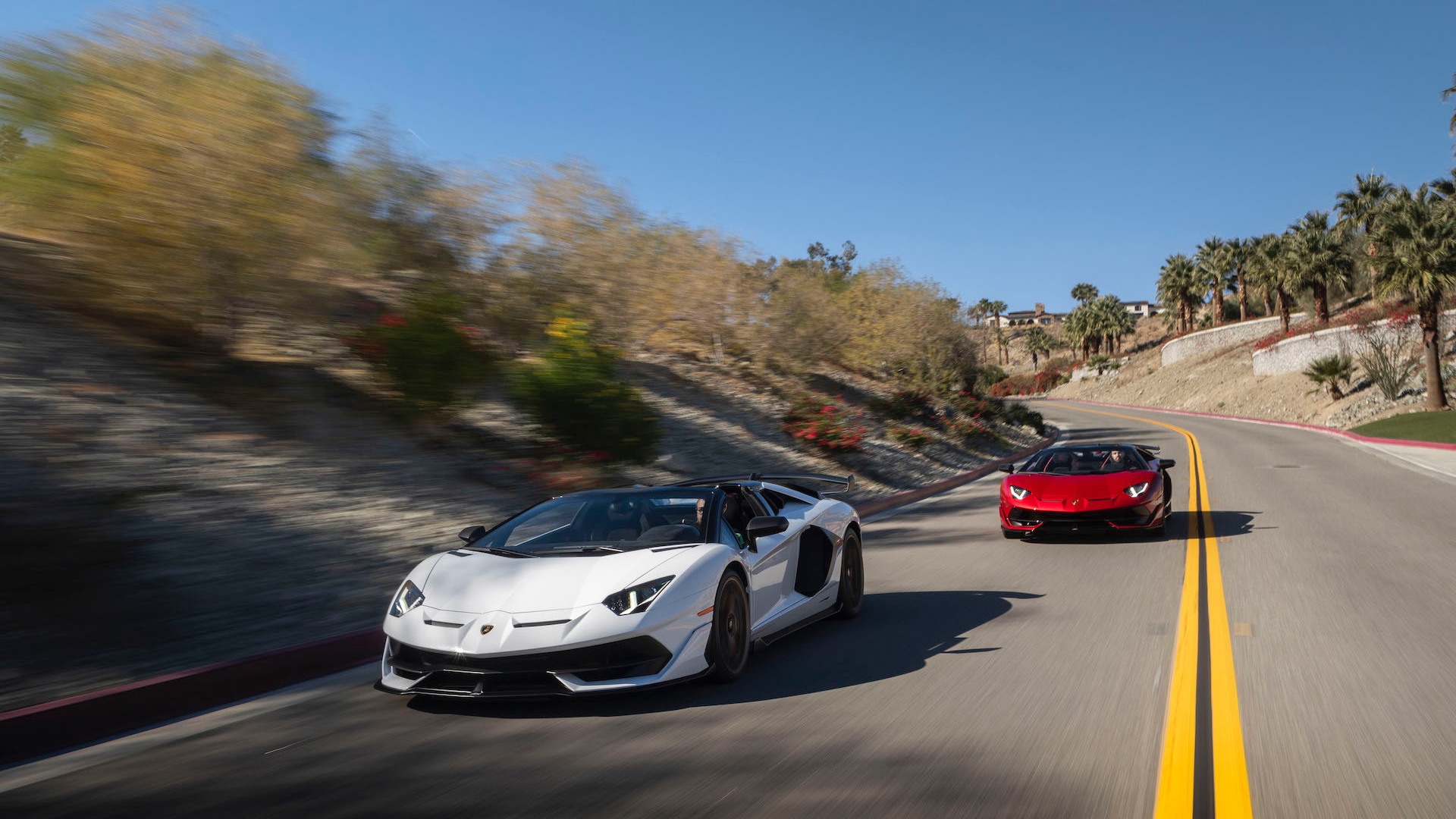The Italians are known for their masterpieces. In the late 15th and early 16th centuries, Michelangelo turned the ceiling of the Sistine Chapel into a work of art and created the statue of David, among many other magnificent sculptures and architectural designs. Da Vinci painted “The Last Supper” and “The Mona Lisa,” and contributed dozens of sculptures and engineering designs that changed the world. Raphael set new standards for grandeur, balance, and composition with works such as the fresco, “The School of Athens” and the painting, "The Marriage of the Virgin." These three masters made up the vanguard of the High Renaissance.
Now, centuries later, the automotive world has two Italian masters of its own, Ferrari and Lamborghini. In 2011, Lamborghini released the Aventador, a masterpiece of modern engineering with Formula 1 suspension technology and a carbon-fiber monocoque. Unlike the Italian masterpieces of the Renaissance, however, the Aventador had to evolve to retain its masterpiece status. Enter the 2020 Aventador SVJ, offered both as a coupe and a roadster, which updates the Aventador to include what Lamborghini calls its “five masterpieces” of engineering.

2020 Lamborghini Aventador SVJ Roadster
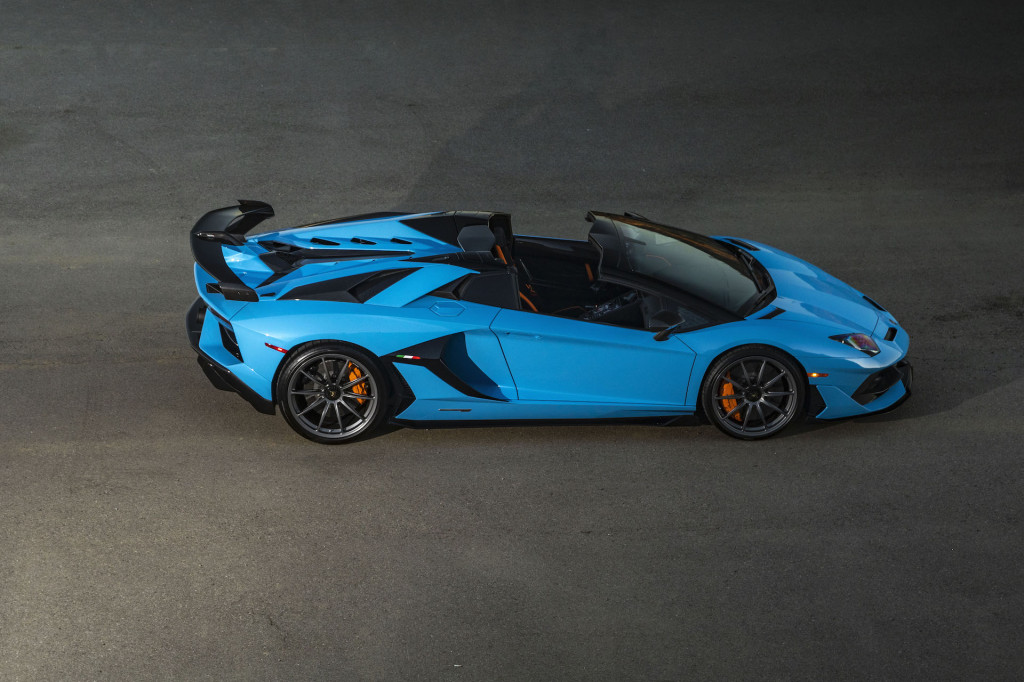
2020 Lamborghini Aventador SVJ Roadster
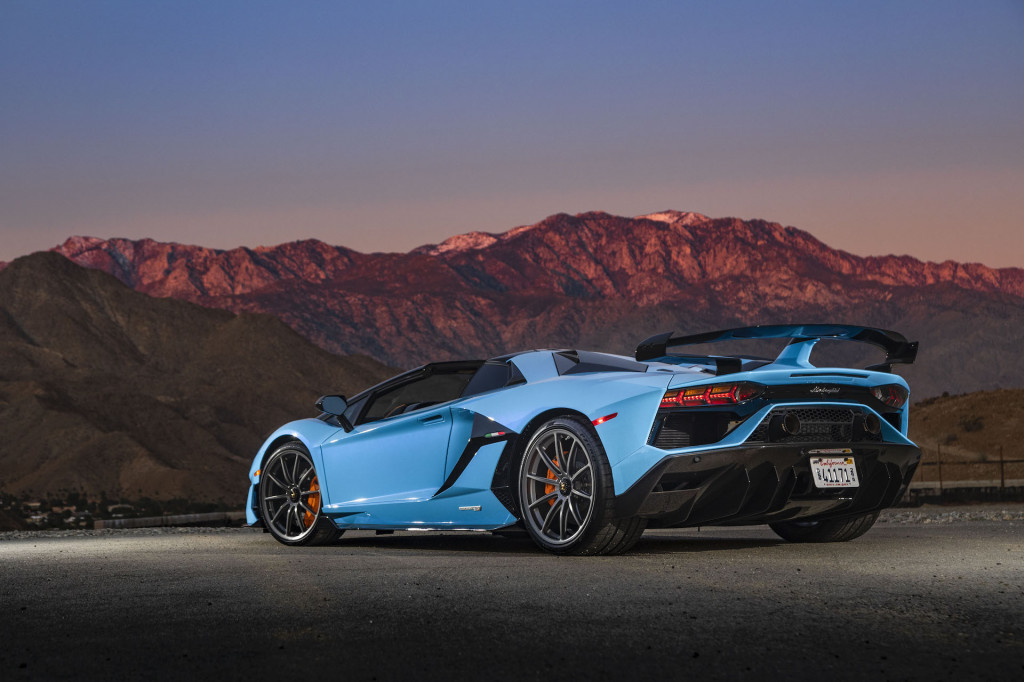
2020 Lamborghini Aventador SVJ Roadster
The five masterpieces
I’m at the wheel of a $667,601 Aventador SVJ Roadster outside of Palm Springs, California, and its self-styled engineering “masterpieces”—all-wheel drive, rear-axle steering, adjustable magnetic dampers, four drive modes, and the SVJ addition, active aerodynamics—are hard at work to make me feel like a hero behind the wheel. They should, after all, as they helped make the Aventador SVJ coupe the fastest car in the world* (*based on the SVJ’s production-car Nurburgring record time of 6:44.97).
The Aventador SVJ Roadster relies on more than just the five masterpieces to handle these twisty desert roads as easily as a Mercedes handles a casual Sunday drive. Its ultra-quick steering ratio (as fast as 10:1, as slow as 18:1) teams with the F1-inspired horizontally mounted springs and adjustable magnetorheological dampers—the first masterpiece—to make the Aventador dive into corners with the immediacy of a West Point cadet. Its massive, sticky Pirelli P Zero Corsa tires (255/30R20 up front and 355/25R21 out back) provide the grip of Darth Vader’s Force choke on the Deathstar commander, while its 15.7-inch front and 15-inch rear carbon ceramic brakes bring all that momentum to a halt like a baudy joke in church.
The Aventador is a big car at 194.6 inches long on a 106.3-inch wheelbase, but the SVJ uses its second masterpiece, rear-axle steering, to tackle the lower-speed, tight stuff like a smaller car. The system turns the rear wheels up to 3 degrees opposite of the fronts below 50 mph to virtually shorten the wheelbase as it darts through mountain switchbacks. The third masterpiece, the all-wheel-drive system, puts the power down in all conditions, and helps pull the car out of corners.
The Aventador’s SVJ’s fourth masterpiece, its four drive modes, adjust the AWD system’s behavior. In Strada (Street) mode, 60 percent of the power flows to the rear wheels. In Sport, 90 percent of the power goes to the rear and the stability control loosens up to make the SVJ feel like a rear-drive drift machine. In Corsa (Track), the rears get 80 percent of the power, which Lamborghini programs in conjunction with stability control to make the car as fast as possible around a track. The fourth drive mode, Ego, allows me to vary the behavior of the steering, powertrain/AWD system, and suspension between Strada, Sport, and Corsa settings to tailor the driving experience to my tastes.
I’m thankful for Ego because it helps mask what is certainly not a masterpiece, the 7-speed single-clutch automated manual transmission. In Strada, the transmission shifts early, and the pauses in power delivery between shifts feel like the car is falling on its face. Sport and Corsa cut the shift times and let the car rev higher, but they also firm up the suspension too much for everyday driving. Ego lets me pick Strada for the suspension, Corsa for the powertrain, and Sport to quicken the steering. All four modes are chosen via buttons on the center console.
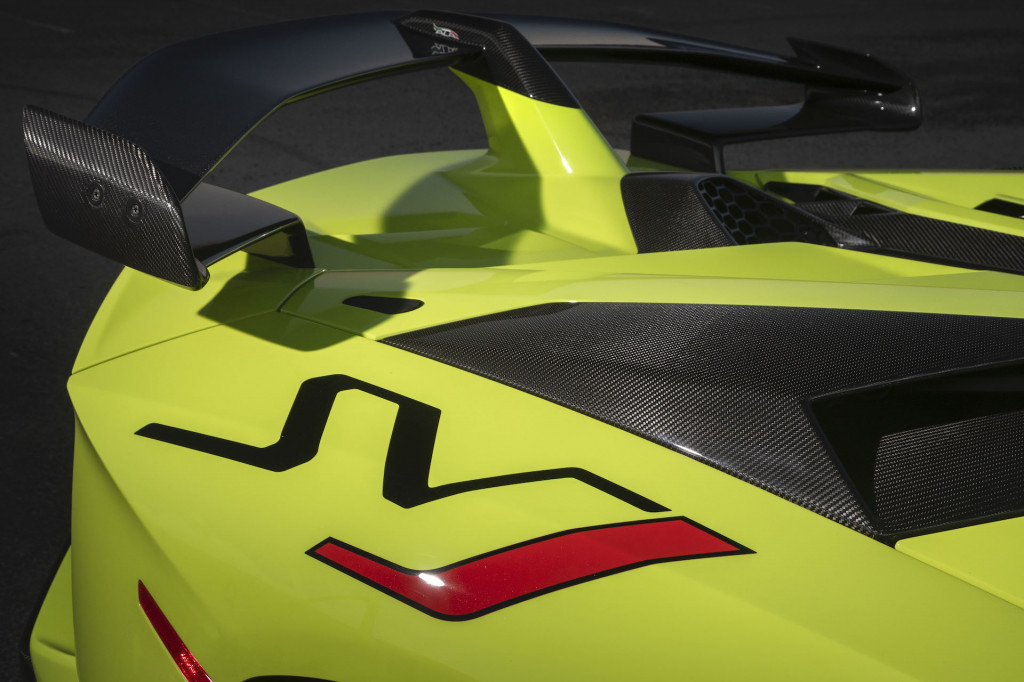
2020 Lamborghini Aventador SVJ Roadster
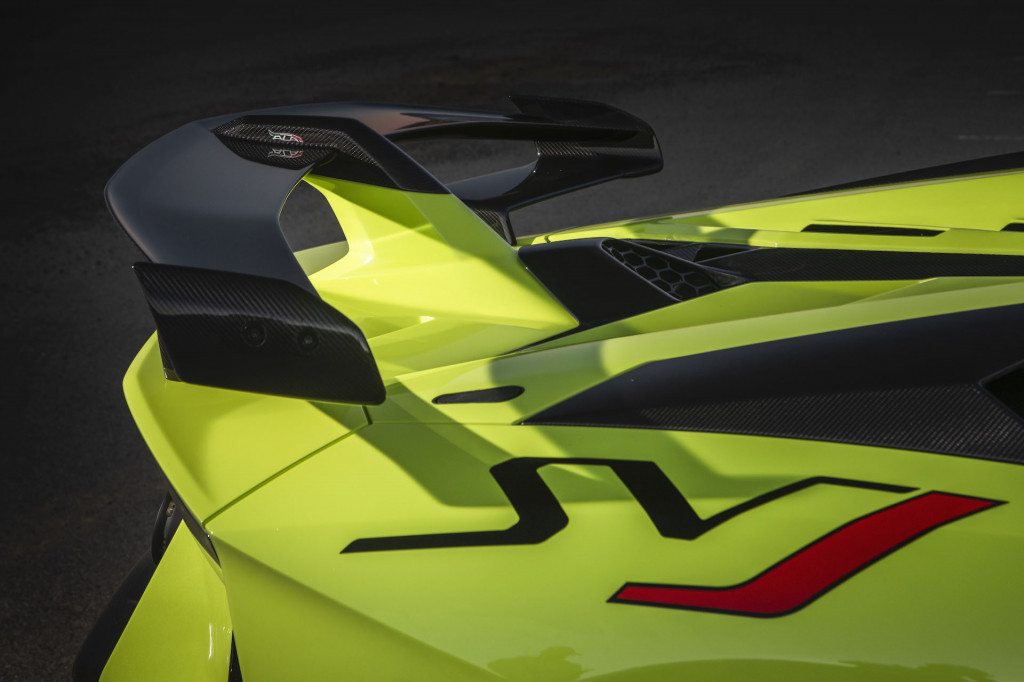
2020 Lamborghini Aventador SVJ Roadster
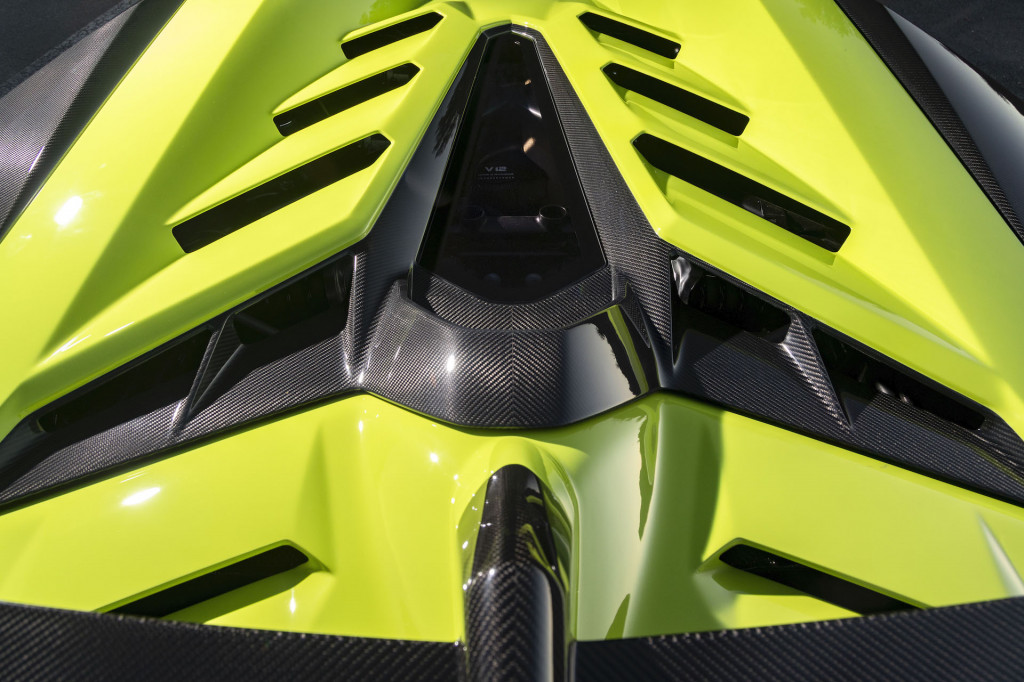
2020 Lamborghini Aventador SVJ Roadster
The fifth masterpiece, the second generation of Lamborghini’s ALA active aerodynamics system, is the key to what makes the coupe the fastest production car ever around the Nürburgring. Aerodinamica Lamborghini Attiva consists of a front end with slots in the lower fascia and upper nose and a hollow rear wing that can channel air through it. When the lower front slots and the flaps for the rear wing are open, the car is set up for top speed. The air up front flows under the smooth bellypan, while at the back it enters a duct in front of the wing, flows through the wing, and exits via slots on the bottom of the wing’s top bar. This “stalls” the wing, negating its downforce. When the flaps for the rear wing are closed, it acts like a typical large rear wing, adding plenty of downforce. At the same time, the slots in the front fascia close and those in the nose open. This mode, which is used during braking, channels air over the hood to create front downforce to balance with the wing’s effect at the rear.
But wait, there’s more: The true master stroke of ALA is its aero-vectoring capability. When cornering, the system stalls the rear wing on the side opposite the corner. When taking a right, for instance, the left side of the wing is stalled, leaving the right side to provide its full downforce on the inside rear wheel. That helps the car get through turns faster than would otherwise be possible.
In all, ALA gives the Aventador SVJ 40 percent more aerodynamic efficiency than the Aventador SV, and this version of ALA provides 30 percent more aero vectoring than the first generation.
I can’t say I feel the effects of the downforce or aero vectoring on these roads—I’d have to be going much faster than speed limits or prudence allow—but this system helped the Aventador SVJ cut 15 seconds off the lap time of the Aventador S over the 12.9 miles of the Nürburgring Nordschiefe. All I know from the cockpit is this car feels stable at speed and planted through corners.
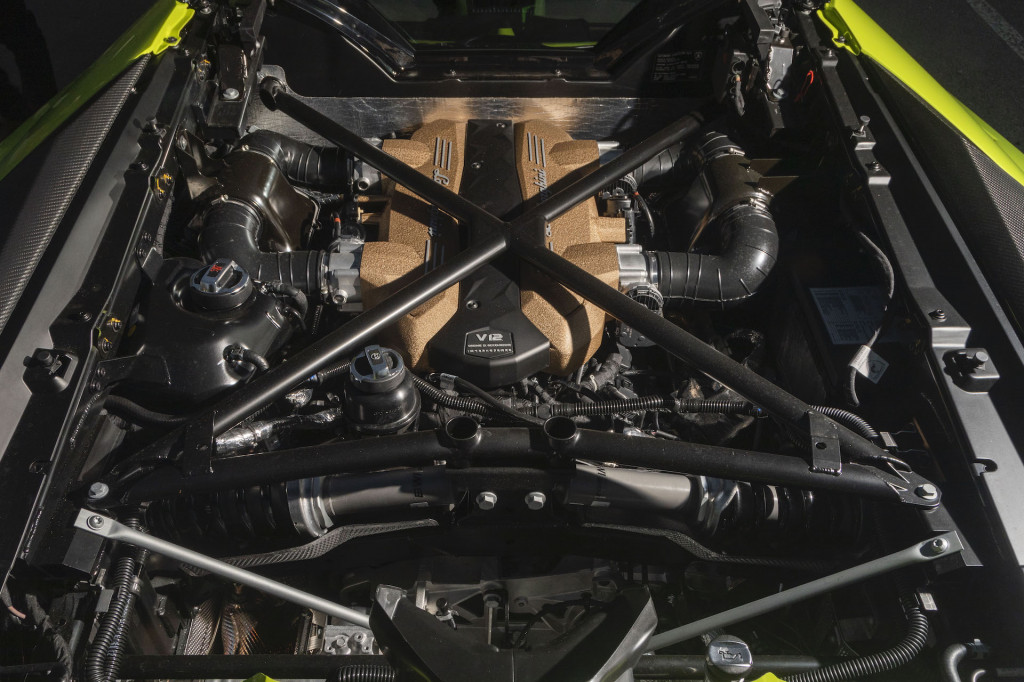
2020 Lamborghini Aventador SVJ Roadster
The Aventador SVJ needs all these goodies because it’s wickedly fast. The 6.5-liter V-12, a masterpiece in its own right, also helped cut those 15 seconds. It wails and thrums as only a naturally aspirated V-12 can as it throws 759 horsepower and 531 pound-feet of torque at the mountain-road pavement. That’s 30 more horses than the Aventador S, and it launches the car from 0-62 mph in 2.9 seconds on its way to a top speed of 217 mph. The power arrives immediately upon corner exit, builds quickly into extralegal speeds, and stays on boil until 8,500 rpm. With the top off or the tiny rear window down, the V-12 becomes a raucous sound system playing classic hits from MTV’s “Metal Mayhem.”
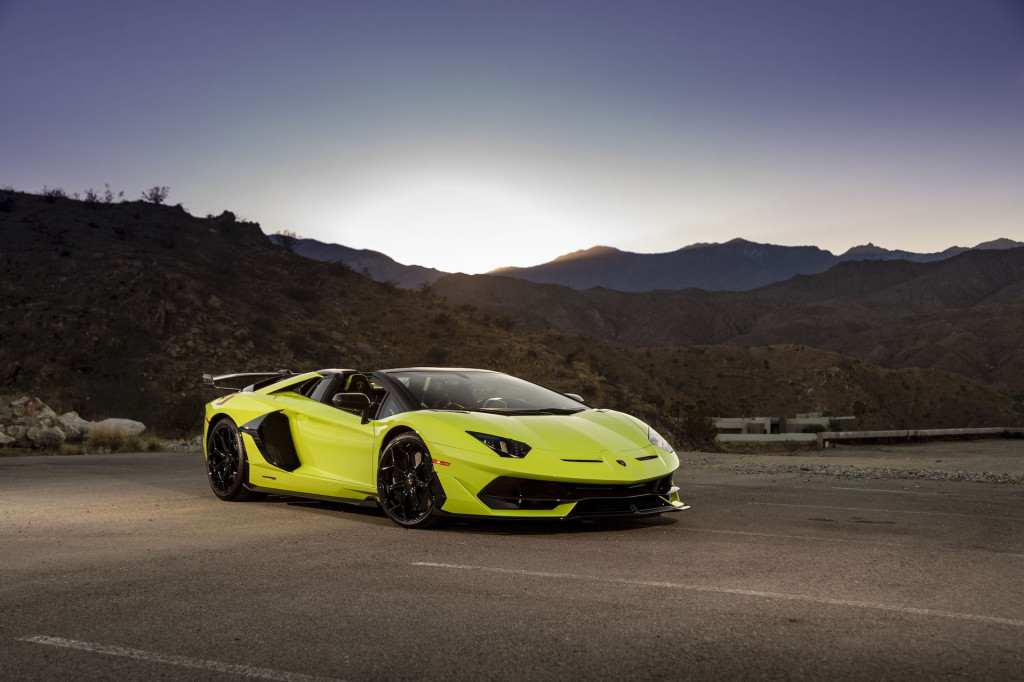
2020 Lamborghini Aventador SVJ Roadster
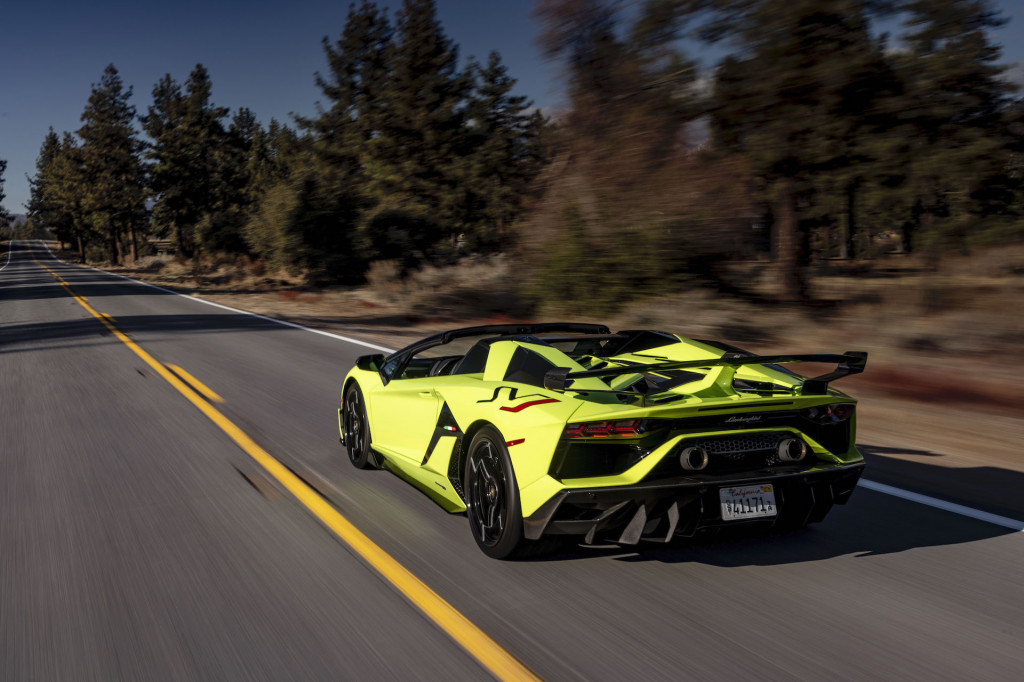
2020 Lamborghini Aventador SVJ Roadster

2020 Lamborghini Aventador SVJ Roadster
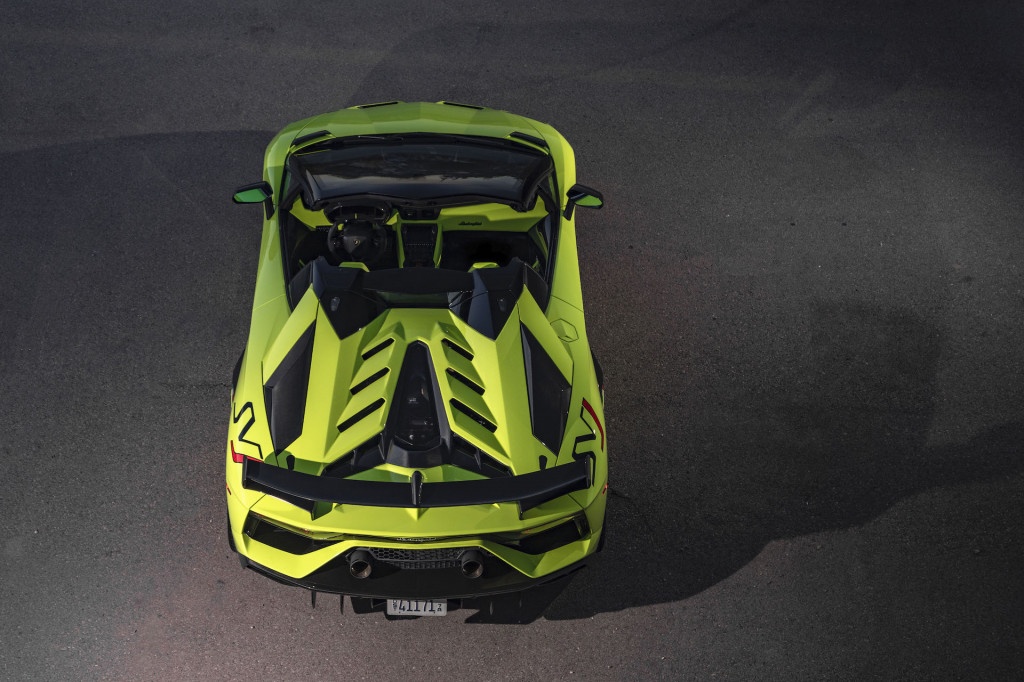
2020 Lamborghini Aventador SVJ Roadster
Convertible or coupe?
The Aventador’s convertible top isn’t power-retractable. Instead, it’s more like a Da Vinci creation. It’s a carbon-fiber two-piece unit that has to be removed by hand and stored in the front trunk. It takes a few minutes to line up pieces and pull the handle behind the driver’s seat to lock it in place and vice versa. Technically, this car could be called a coupe as its design is similar to that of the 2020 Corvette coupe, which has a single-piece removable top section. The Aventador Roadster also features snap-in wind blockers for the windshield header, and its engine cover is a removable carbon-fiber piece instead of a hatch like on the coupe.
With the top in place, the Aventador SVJ blocks out sound and sky like a coupe. The interior feels like a fighter pilot’s cockpit, but with much nicer materials. Alcantara, leather, then Alcantara again cover the dash from top to bottom, polished carbon fiber makes up the entirety of the door panels, and Alcantara and leather cover the flat, hard seats.

2020 Lamborghini Aventador SVJ Roadster
The seats do offer plenty of lumbar support, though, which I noticed immediately when a stab of the throttle by my drive partner helped crack my back. Still, the Aventador has more interior space than the typical supercar, with good head, leg, and shoulder room. Its controls are clustered at the front of the center stack, not on the steering wheel like in a Ferrari, and their groupings become second nature after an initial learning curve. The combination of space and decent ride quality in Corsa mode means the Aventador can be driven on a regular basis, not just special occasions, if your back can handle the hard seats.
Driving hard or just cruising, the Aventador SVJ Roadster delivers a vibrant, visceral experience that only becomes more immersive when going topless. The steering is alive with feel and precision, the sound intoxicating, the grip phenomenal, and the speeds, well, the speeds threaten to put you in jail. It’s all to be expected for a car that starts at $577,661. That’s a stratosphere most can’t afford to experience, but if you want a masterpiece, you’ll have to pay.
Lamborghini provided travel and lodging to Internet Brands Automotive to bring you this firsthand report.
